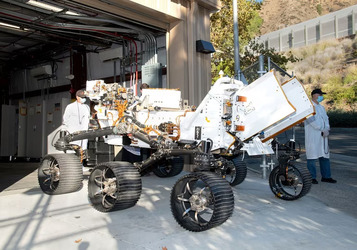The week's pick
Random Articles
Reseach Article
Using GPS and Google Maps for Mapping Digital Postal Address (GhanaPostGPS)
| Communications on Applied Electronics |
| Foundation of Computer Science (FCS), NY, USA |
| Volume 7 - Number 13 |
| Year of Publication: 2018 |
| Authors: Silas Kwabla Gah, Ferdinard Katsriku, Nana Kwame Gyamfi |
 10.5120/cae2018652749
10.5120/cae2018652749
|
Silas Kwabla Gah, Ferdinard Katsriku, Nana Kwame Gyamfi . Using GPS and Google Maps for Mapping Digital Postal Address (GhanaPostGPS). Communications on Applied Electronics. 7, 13 ( Feb 2018), 15-20. DOI=10.5120/cae2018652749
Abstract
Google map is a platform that gives visual representation of geographical locations on the planet earth. Google maps has many features that for displaying maps and adding external contents to the map. In recent years many institutions and organizations have customized the features and functions of Google maps to build new applications that address their specific needs. Developing nations are faced with booming population growth, inadequate infrastructure and services. To provide many important services, especially financial services it is required that people are accurately located by use of a verifiable address. Developing an effective addressing system has been a challenge for many developing nations due to inadequate road and street network. This paper discusses the use of Google maps API to link properties in Ghana, hence assigning a digital address to each landmark in the country. The paper examines the technology that Google maps API provides and how it was harnessed to develop the GhanaPostGPS addressing system. This application helps users to acquire their digital address and enables others to search the location of an address via the system. The result from the Google maps API reverse geocoding shows that there is no district in the JSON response, an indicating factor showing extra work done by the developers of the application. This clearly shows the work is not a direct replica of services offered by Google maps although some services of Google maps were employed.
References
- Gabriel Svennerberg, Beginning Google Maps API 3, USA: Apress, 2010.
- R. J. A. W. P. M. Blazej Cipeluch, "Comparison of the accuracy of OpenStrretMap for ireland with Google Maps and Bing Maps," in Proceedings of the Ninth International Symposium on Spatial Accuracy Assessment in Natural Resuorces and Enviromental Sciences, Ireland, 2010.
- Google, "Google Maps API," Google, 10 December 2017. [Online]. Available: https://google-developers.appspot.com/maps/faq#whatis. [Accessed 10 2017 2017].
- H. Z. J. K. E. C. Hoang Nguyen, "RooWay: A Web-based Application for UA Campus," in International Conference on Computational Science and Computational Intelligence, 2015.
- I. O. &. U. N. N. Bildirici, "Web mapping with Google maps mashups: overlaying geodata," in A special joint symposium of ISPRS technical commission IV & AutoCarto in conjunction with ASPRS/CaGIS 2010 fall specialty conference, Orlando, FL (pp. 15-19)., Orlando, 2010.
Index Terms
Keywords

